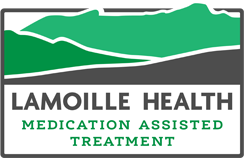Glossary
![]()
Dependence
A bodily response to the regular use of a substance, prescribed or otherwise. This includes the development of a tolerance as the body adapts to the drug, leading to larger amounts of the substance being used and used more frequently to get the same results. If the substance is stopped or reduced someone will experience physical symptoms of withdrawal.
Detoxification or Detox
The process of letting the body remove the drugs in it. The purpose of detox is to safely manage withdrawal symptoms when someone stops taking drugs or alcohol. Some substances, like alcohol and benzodiazepines, can be dangerous or life-threatening to detox from and people may need to be in a supervised setting to do this safety
Extended-Release Buprenorphine (Sublocade or Brixadi)
This is a formulation of Buprenorphine which is given by injection. Instead of taking a medication daily, injections are given weekly or monthly depending on the medication. Someone must start oral medication first and their dose of oral medication could influence which extended-release medication may be a good fit for them.
Harm Reduction
Harm reduction is a set of practical strategies and ideas aimed at reducing negative consequences associated with drug use. Harm Reduction is also a movement for social justice built on a belief in, and respect for, the rights of people who use drugs.
Hub and Spoke
Hub and Spoke is Vermont’s system of Medication Assisted Treatment, supporting people in recovery from opioid use disorder. Hubs offer daily support for patients with complex addictions. Spokes offer ongoing opioid use disorder treatment fully integrated with general healthcare and wellness services. This system was developed by Blueprint for Health
Induction
When a patient starts taking a new medication, they need to be assessed for the appropriate dose, or amount of milligrams, needed. If a patient continues to experience withdrawal symptoms, the dose of medication may need to be increased.
Methadone
A medication approved by the Food and Drug Administration (FDA) to treat opioid use disorder (OUD) as a medication-assisted treatment (MAT), as well as for pain management. When taken as prescribed, methadone is safe and effective. Methadone helps individuals achieve and sustain recovery
MOUD
Medications for Opioid Use Disorder. MAT and MOUD are sometimes used interchangeably. MOUD specifically identifies treatment, resources, and supports for Opioid use while MAT can be used as an umbrella term to discuss the use of medication in addiction treatment.
Narcan
This is a medication used to reverse the effects of an opioid overdose. This medication can be given to some as nasal spray or a medical professional can administer with an injection. Narcan saves lives and anyone can have access to this medication to have in their homes or to carry with them. This can be prescribed by a primary care doctor or given out by a Narcan distribution site. Opioid Overdose Prevention | Vermont Department of Health (healthvermont.gov)
Opioids/ Opiates
Opioids are a class of drugs that include illegal drugs like heroin, synthetic opioids like fentanyl, and prescription drugs like oxycodone, hydrocodone, codeine, and morphine. All opioids attach to opioid receptors in the body and can relieve pain. Opioids can be safe to use when prescribed for a short time by a doctor. Opioids can also be misused when they are taken when not prescribed, in larger amounts than what is prescribed, or taken for longer than prescribed. Regular use of opioids can lead to dependence, even when taken as prescribed.
Overdose (OD)
An excessing and dangerous dose of a drug at such a magnitude that it overwhelms normal physiological functioning. Signs and symptoms of an opioid overdose can include: unresponsive to voice or touch, breathing is slow, irregular, or has stopped, constricted pupils, and blue lips. Narcan can help reverse an overdose from opioids if given right away.
RAM
Rapid Access to Medication Assisted Treatment- A harm reduction, medication first model. This model reduces barriers to starting treatment with medications like buprenorphine or Suboxone and fast-tracks people into treatment.
Suboxone (Buprenorphine- Naloxone)
A medication approved by the Food and Drug Administration (FDA) to treat opioid use disorder (OUD) as a medication-assisted treatment (MAT). This medication is a combination of buprenorphine and Naloxone. Buprenorphine is an opioid partial agonist which has been shown to diminish the effects of physical dependence to opioids, such as withdrawal symptoms and cravings. Naloxone blocks the effects of other opioids.
Subutex (Buprenorphine)
Buprenorphine is a medication approved by the Food and Drug Administration (FDA) to treat opioid use disorder (OUD) as a medication-assisted treatment (MAT). Buprenorphine is an opioid partial agonist. When taken as prescribed, buprenorphine is safe and effective and has been shown to diminish the effects of physical dependence to opioids, such as withdrawal symptoms and cravings, and lowers the potential for misuse
Taper
When someone gradually decreased the amount of a medication or substance they are taking with the goal to no longer taking the medication or substance
UA/UDS
Urine Analysis/ Urine Drug Screen- When someone’s urine is tested for the presence or absence of substances. UDS is a tool used in MAT programs at regular visits with their provider or on a random call-in schedule to monitor someone’s recovery progress.
Vivitrol (Naltrexone)
This medication is used to help people who are struggling with opioid or alcohol use by reducing cravings and blocking the effects of alcohol or opioids. Naltrexone is a tablet taken daily by mouth. Vivitrol is an injection that lasts 30 days. Someone who is on this medication has their liver functioning monitored regularly by their provider to make sure that it is appropriate to continue this treatment.
